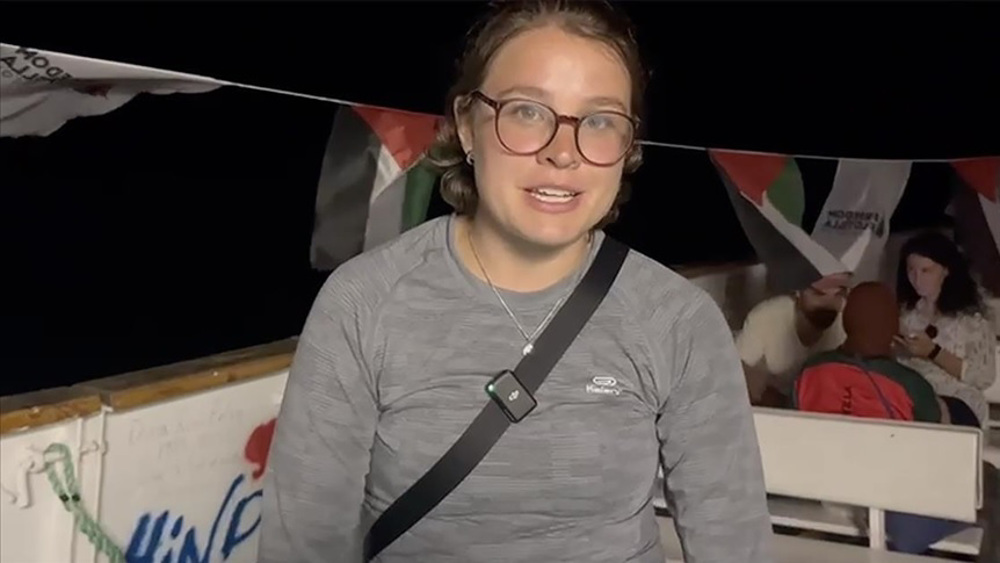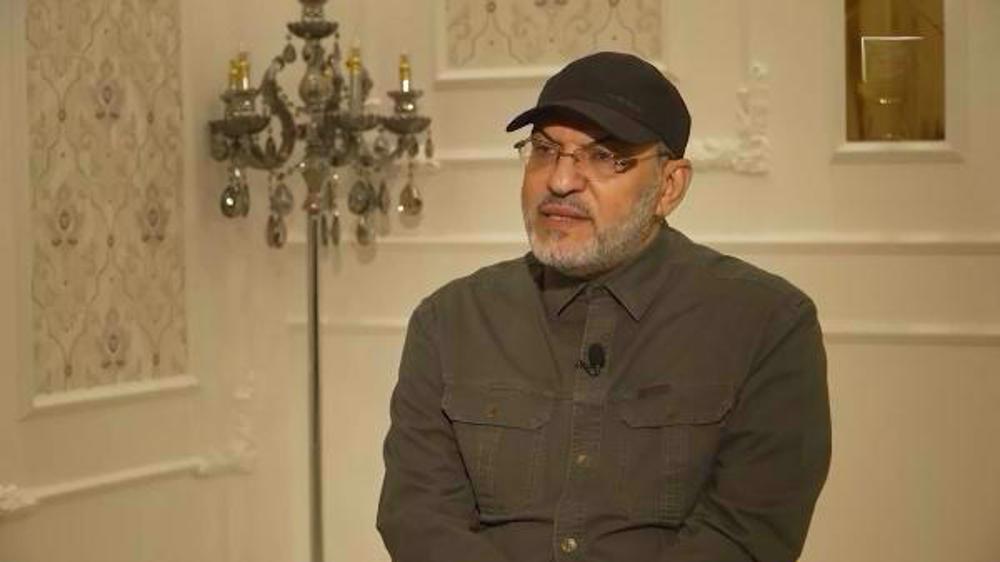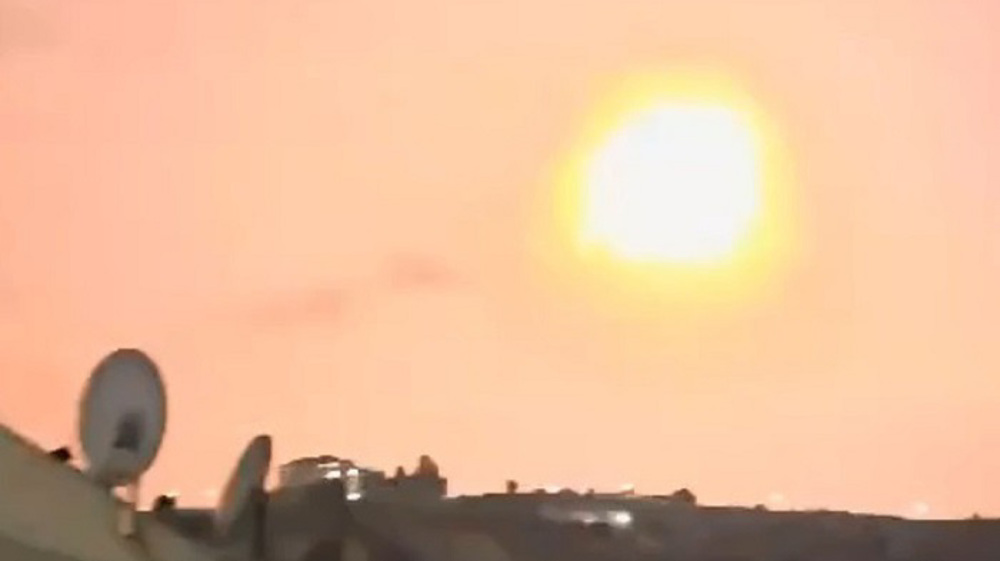Sinwar’s letters to Hezbollah, Ansarullah leaders show ‘Axis of Resistance’ bonding
By Maryam Qarehgozlou
A day after the Yemeni military launched a supersonic ballistic missile that evaded Israeli radar systems and struck the heart of Tel Aviv, Hamas leader Yahya Sinwar wrote a letter to the leader of Yemen’s Ansarullah resistance movement Sayyed Abdul-Malik al-Houthi.
In the letter, Sinwar’s first to Houthi, the newly-appointed leader of the Gaza-based Palestinian resistance movement thanked Yemen for “reigniting” the intensity of Operation Al-Aqsa Flood and reminding the Zionist regime that its “containment plan” against the resistance front has failed.
In the wee hours of Sunday morning, in a stunning development that hogged headlines and took the Tel Aviv regime and its Western backers by complete surprise, a Yemeni hypersonic ballistic missile soared over 2,000 kilometers to strike its target in Tel Aviv.
It marked the first time a Yemeni missile landed in the heart of Israeli-occupied territories, showcasing the Arab country’s growing military capabilities and failure of the much-hyped defense system of the Israeli regime, the US, and its Arab allies.
“[The missile] traveled a distance of 2,040 km in 11 and a half minutes, causing panic among Zionists, with over two million seeking shelter for the first time in the history of the Israeli enemy,” Brigadier General Yahya Saree, spokesperson for the Yemeni Armed Forces, said in a statement.
The attack on Tel Aviv came against the backdrop of the Israeli regime’s genocidal war on the Gaza Strip, which has so far claimed the lives of 41,252 Palestinians, most of them children and women.
"The large group is the US, NATO, Britain, and some others."
— Press TV 🔻 (@PressTV) August 5, 2024
In a meeting with late Hamas leader Ismail Haniyeh, Ayatollah Khamenei told him that the Palestinian resistance is a small group that overcame a large group. pic.twitter.com/9uvXpG7iVH
Yemen at the forefront
Yemen has been at the forefront of pro-Palestine regional military campaigns since last October, carrying out a series of strategic operations against Israeli interests, both in the Yemeni waters and inside the occupied territories, as a mark of support for the Palestinians in Gaza.
The ongoing military campaign has entered its latest phase, with the recent strike on Tel Aviv serving as a testament to the resilience and determination of the Yemeni forces.
“I congratulate you on your success in having your rockets reach deep into the enemy’s entity, surpassing all layers and systems of defense and interception, to reignite the intensity of the battle of Al-Aqsa Flood [Strom] and its impact on the heart of ‘Tel Aviv’ once again,” Sinwar wrote to Houthi.
Sinwar, who took over from Ismail Haniyeh as the new leader of Hamas after the latter was assassinated in an Israeli strike in Tehran, said Israel believed that its genocidal war against Gaza, and its efforts to “contain” and “neutralize” the resistance front, overseen by the US and its allies, would lead to its victory in its “Nazi battle” against Palestinian.
However, he asserted, Yemen’s “qualitative operation” sends a message to the enemy that its plans of containment and neutralization have proved a major failure.
“The impact of the support fronts is beginning to take on a more effective and profound influence, in decisively tipping the battle in favor of our proud and free people,” Sinwar noted.
Yemen’s solidarity operation has unfolded in several phases, each showcasing the tactical prowess and dedication of the resistance front in its struggle against the occupation forces of Israel and its Western and Arab allies.
The implications of the solidarity operations for the US and Israel are profound and far-reaching.
✍️ Viewpoint - Settlers in Tel Aviv no longer safe after Yemeni military’s hypersonic missile strike
— Press TV 🔻 (@PressTV) September 17, 2024
By Wesam Bahranihttps://t.co/ddTKXiMEWx
Series of operations
Since last November, Yemen has implemented a comprehensive naval blockade, targeting vessels in the Red Sea, Arabian Sea, Gulf of Aden, Indian Ocean, and the Mediterranean that intend to deliver goods to Israeli-occupied ports.
Yemen has already made it clear that vessels heading to the occupied territories would be targeted.
Targeting ships heading to the occupied territories in the Red Sea has forced them to reroute and disrupted vital trade routes, resulting in heavy costs for those vessels and their sponsors.
Yemen armed forces have also targeted US and British warships in response to a violent and illegal campaign of airstrikes launched by Washington and London against Yemen in recent months.
The attempts by US and EU maritime task forces to prevent attacks on ships have not been as effective as initially hoped, according to reports from both the American and British militaries.
Vice Admiral George Wikoff, the head of US naval efforts in West Asia, stated in August that the American and British approach to combating Yemen’s solidarity operations in the Red Sea crisis had failed to deter them as evidenced by intermittent attacks.
In an interview in July, Commander Benjamin Orloff, a US Navy pilot who recently returned from deployment, described his experience of intercepting Yemeni missiles and drones as “traumatizing.”
The commander of the USS Carney warship and its other crewmembers in June said the Yemeni army poses a threat unseen by the US Navy since World War II.
Yemenis have vowed to continue their operations unless Israel stops its bloodshed in Gaza.
Explainer: How did Yemeni military strike heart of Tel Aviv, evading hi-tech radars?
— Press TV 🔻 (@PressTV) September 16, 2024
By Ivan Kesichttps://t.co/D2bDE0sx5C
Hezbollah’s support for Palestine
Much like Yemenis, Lebanon’s Hezbollah resistance movement has also been carrying out military operations against Israel since October 8 last year in solidarity with the people in Gaza.
The Lebanese resistance movement, in near-daily operations, has been launching rockets and missiles into the occupied territories, targeting Israeli military positions and personnel.
On August 25, Hezbollah executed a series of drone strikes code-named “Operation Arbaeen Day” against the Glilot base, home to Unit 8200 – the Israeli Military Intelligence Directorate’s primary information-gathering unit.
The operation coincided with Arbaeen, the 40th day after Ashura when Imam Hussain (AS) and his companions were martyred in Karbala, Iraq, approximately 14 centuries ago.
The retaliatory operation, according to a report by Lebanon’s Al-Mayadeen TV quoting European sources, resulted in the deaths of at least 22 Israeli military personnel and injuries to 74 others.
Tel Aviv, as the nerve center of Israel, boasts a robust seven-layered air defense system designed to safeguard the city against aerial threats.
However, Hezbollah’s drone strike against the highly sensitive Unit 8200 headquarters proved once again the supreme capability of the resistance group to circumvent the so-called defense mechanisms.
Explainer: How Hezbollah's Operation "Arba'een," a massive retaliatory strike, was carried out and why Israel was unable to prevent it.
— Press TV 🔻 (@PressTV) August 27, 2024
Follow Press TV on Telegram: https://t.co/B3zXG74hnU pic.twitter.com/F8jNGZSVAt
Letter of gratitude
In a letter to Hezbollah leader Sayyed Hassan Nasrallah last week, Sinwar acknowledged the contribution of the Lebanese resistance movement in the fight against the Israeli occupation and reaffirmed Hamas’ commitment to resist the illegitimate entity as part of the Axis of Resistance.
“We thank you for your solidarity, which was imbued with sincere and noble emotions, as expressed through your blessed actions on the frontlines of the Axis of Resistance—supporting, aiding, and participating in this battle,” Sinwar wrote, thanking Nasrallah for his condolence letter over the assassination of Haniyeh.
“Our leader and symbol of the nation and Palestine, Abu Al-Abed, ascended as a martyr in the Al-Aqsa Flood battle, one of the most honorable historical battles of our Palestinian people. His blood, and that of his sons, grandchildren, and family, merges with the great sacrifices offered by our people in Gaza, the West Bank, Al-Quds, and the occupied lands,” the letter written by Sinwar noted.
However, he hastened to add that the blood of Hamas leader was “not more precious” than the blood of Palestinians being killed every day in the besieged Gaza Strip, echoing what Haniyeh said himself.
Sinwar vowed that the Palestinian movement would “remain steadfast” in carrying forward the legacy of martyrs and continuing on the path to Al-Quds under the banner of the ‘Axis of Resistance’.
Hamas leader Yahya Sinwar has sent a letter to Hezbollah chief Sayyed Hassan Nasrallah, pledging that the resistance movement will "remain steadfast" on the path of defeating Israel.
— Press TV 🔻 (@PressTV) September 13, 2024
Read more: https://t.co/60AHjiFwYv pic.twitter.com/34PrbKDcyd
Iraqi resistance ups ante
Islamic Resistance in Iraq, an umbrella group of resistance groups in the Arab country, has also carried out a series of operations against targets across the occupied Palestinian territories since October 7.
Earlier this month, it hit a strategic target in the port of Haifa in the northern part of the occupied territories with a squadron of kamikaze drones.
Since early August, the umbrella group has also stepped up its operations against US-occupied bases across Iraq and neighboring Syria, due to American complicity in the Gaza genocide.
The Iraqi resistance groups have warned that they will continue to launch further attacks that would “surprise” the enemy both inside and outside the Iraqi territory.
The resistance front’s unwavering commitment to the Palestinian cause has not only exposed the limitations of the Israeli military but also revealed the waning influence of the US in the region.
Analysts say the growing isolation of both the US and the Israeli regime, coupled with the mounting costs of sustaining their military campaigns, has led to a sense of desperation and vulnerability in the corridors of power in both Washington and Tel Aviv.
As the resistance front continues to gain momentum, the struggle for Palestinian liberation has reached a critical juncture, paving the way for a new era of hope and determination in the face of adversity.
In his letter to Ansarallah leader, Sinwar reiterated that the resistance is “in good shape”, and what the enemy is claiming is nothing but “mere lies and psychological warfare.”
The Hamas leader also said that they are prepared for a “prolonged war of attrition” that will break the enemy’s political will, just as Operation Al-Aqsa Flood broke its military will.
“The unification of our efforts with you and our brothers in the valiant resistance in Lebanon and the Islamic Resistance in Iraq will break this enemy and bring about its defeat, paving the way for its expulsion from our land, by the will of Allah,” he wrote.
Iran border guards bust terror team, seize firearms in Sistan and Baluchestan
IRGC says Trump’s threats stem from desperation, vows to defeat all plots
The Abu Mahdi Al-Muhandis Catamaran
Venezuela declares state of emergency after US strikes against civilian, military targets
VIDEO | Remembering Qasem Soleimani
NYC Mayor Mamdani lauded after revoking pro-Israel decrees
Freedom Flotilla slams Israeli sexual crimes against volunteers, calls for global action
Israel conducts multiple airstrikes across south Lebanon, violating ceasefire















 This makes it easy to access the Press TV website
This makes it easy to access the Press TV website